Planting and caring for honeysuckle in the Moscow region
Summer residents in central Russia are showing more and more interest in edible honeysuckle - an unpretentious shrub that begins to bear fruit in early June. Its berries have medicinal properties and are used in folk medicine and cooking. The plant itself has decorative properties, it is planted along fences and hedges, used for zoning the territory. Let's talk about planting and caring for honeysuckle in the spring in the Moscow region.
The content of the article
Planting honeysuckle in the suburbs
Useful properties, decorative qualities, unpretentiousness in growing, frost resistance are increasingly attracting the attention of gardeners of the Moscow region to honeysuckle.
The best varieties of honeysuckle for the Moscow region
Breeders brought varietiesadapted to cool and humid climatic conditions, which are not afraid of cold winters near Moscow and unexpected return frosts.
Titmouse
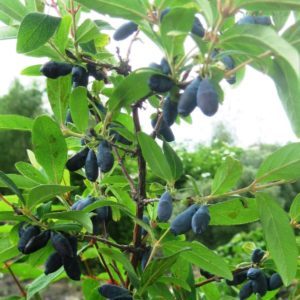
A vigorous variety, can reach 2 m in height, prefers sunny areas, requires regular watering. The fruits are sweet, without bitterness, with a pleasant aroma, reach a size of more than 2.5 cm, do not crumble during the ripening period.
Darling
It grows in height no more than 1 m, the crown is round, thickened. The fruits are about 2 cm long, sweet and fragrant. The variety is late-ripening, but high-yielding - up to 3 kg of fruits are harvested from one bush. When ripe, the berries do not crumble.
Nymph
Medium early variety, low, but with a voluminous lush crown. Perfect for cultivation in the Moscow region. It is frost-resistant, unpretentious, bears fruit up to 25 years. The berries are bluish-blue, large, without bitterness.
Bakchar giant
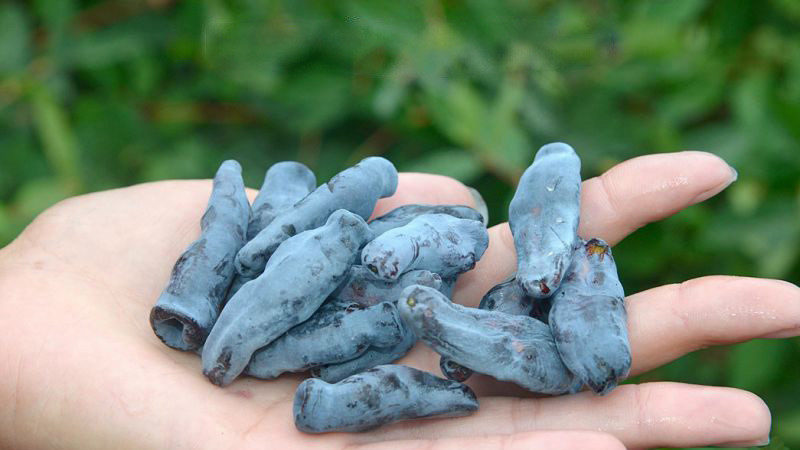
The variety is mid-season, large-fruited, the berries are large up to 5 cm in length, have a sweet taste with a slight sourness. With good care, the yield reaches 4.5 kg per bush.
Cinderella
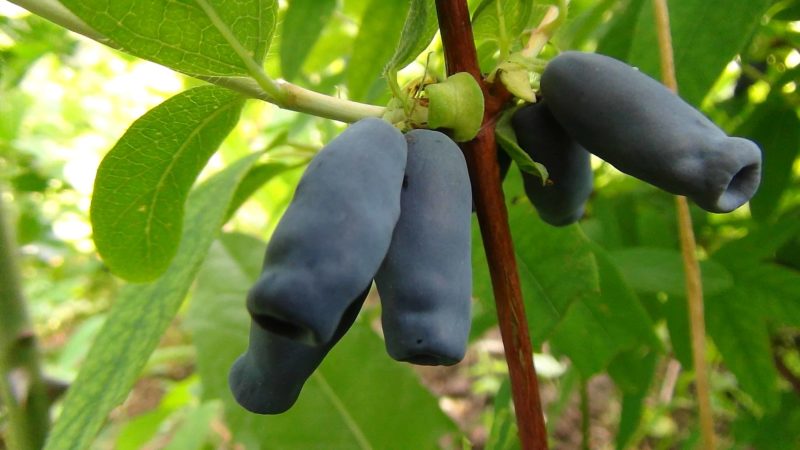
An early maturing low-growing variety, while the yield can reach up to 5 kg. The size of the berries is medium, ripening at the end of June. Differs in an unusual fruit taste - sweet, with a strawberry aroma without characteristic bitterness or astringency.
When to plant a shrub
Planting honeysuckle seedlings in the Moscow region in open ground can be produced both in autumn and spring.
It is preferable to do this in the fall, about a month before the onset of stable frosts, when the plant is preparing for the dormant period. If planted between late August and mid-September, it will have time to take root and be better prepared for winter.
Planting in spring is possible, provided that the seedling is in a cassette, where its roots are protected. When planted in spring with open roots, the chances of survival are significantly reduced.
Site selection and soil preparation for growth
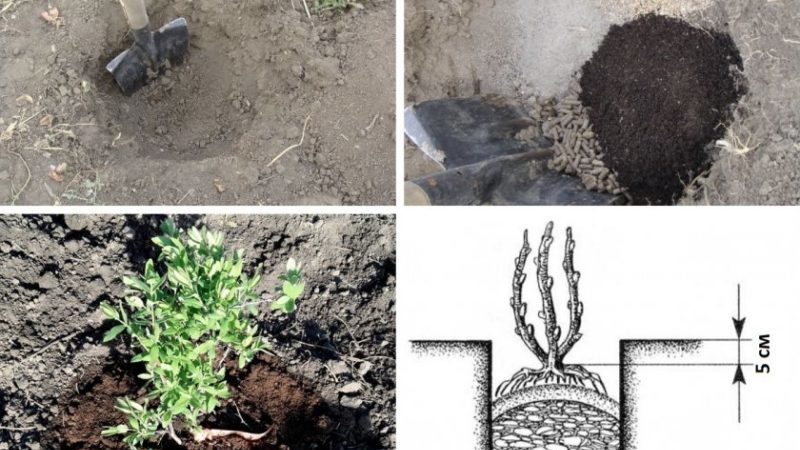
Planting soil should be loose in structure, fertile, rich in nutrients. Ideally, if it is loamy or sandy loam soil.
A prerequisite for survival and getting a large harvest is the right choice of planting site. It should be:
- open to sunlight;
- protected from cold wind and drafts, so it is better to plant a seedling from the south side of a building or fence;
- with a good drainage system and slightly acidic soil, sandy soil, wetlands and lowlands should be avoided;
- with a moderate amount of moisture;
- be at a sufficient distance from other trees and shrubs;
- do not be in the shade.
How to plant correctly
When planting, the seedling should have a height of 35-40 cm and several branches. It should not have any damage, broken branches and dry places, rot and damage at the roots. It is advisable to purchase material for planting in special nurseries.
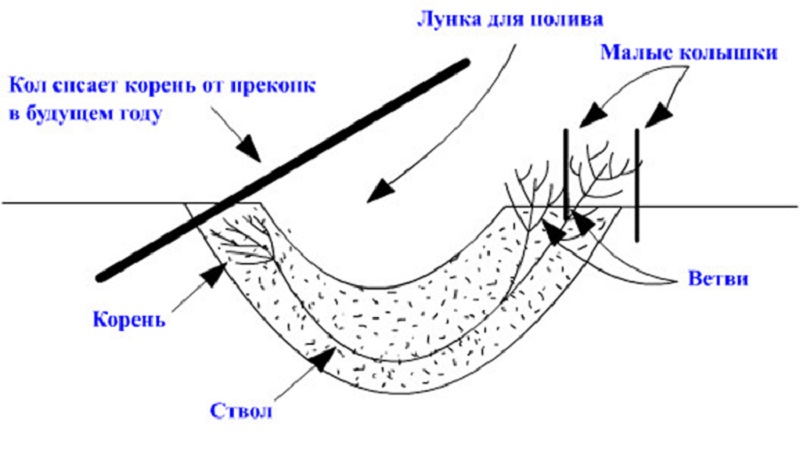
Sequence of actions for landing:
- Dig a hole 50x50x50 cm in size.
- Lay drainage at the bottom with a layer of 10-15 cm.
- Mix the soil from the pit with sand, ash and humus in equal amounts.
- In the prepared hole, build a cone from the soil, place a seedling on it, straighten the roots.
- Cover with earth so that the root collar is 5-7 cm above the surface.
- Install a support number next to the seedling.
- Compact the soil around the bush, form a side at a distance of 30 cm from the root collar.
- Pour a bucket of water over the soil and cover with dry leaves, straw or sawdust.
Place plants at a distance of at least 1-2 m from each other.
How to care for honeysuckle in the Moscow region
Honeysuckle is a very unpretentious plant, caring for it is simple, but requires compliance with a number of elementary agrotechnical rules.
Watering and feeding
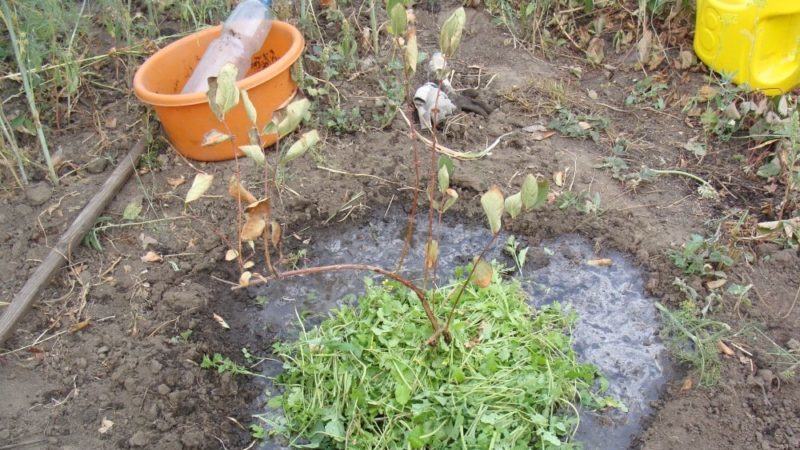
Timely and sufficient watering is very important for this crop. When the soil dries out, the shrub begins to dry out and wither. In a dry year, it must be watered daily in a volume of at least 10 liters of water per bush. During the fruiting period, the amount of moisture is doubled.
If there is no severe drought, it is enough to water the honeysuckle 3-4 times per season. After watering, it is recommended to mulch the soil.
Attention!Lack of moisture negatively affects taste. The fruits lose their sweetness, become excessively sour, and bitterness appears.
After planting a shrub in open ground, there is no need to fertilize it in the first 2-3 years, it has enough nutrients placed in the ground during planting.
In the fourth year, a mixture of organic and mineral nutrients is introduced in the fall. To do this, mix 5 kg of compost with 100 g of wood ash and 40 g of superphosphate. In the spring, the bush is fed with urea - 1 tbsp. l. 10 liters of water.
Attention! Top dressing with ammonium nitrate is carried out until the buds swell.
Pruning and rejuvenation
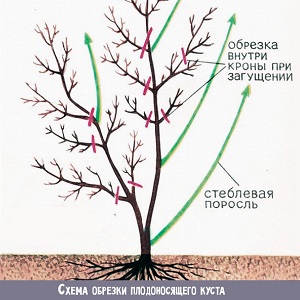
In the first 3-4 years after planting, the young plant is not pruned. Then this procedure is performed most often in early spring before the beginning of the process of swelling of the kidneys. Old, broken and dry branches are removed, in place of which young and strong ones grow.
Upon reaching the age of eight, the bush is pruned every two years. To rejuvenate it, the upper old branches are removed in the middle of the plant, as well as shoots and branches lying on the surface of the soil.
Important!The plant is pruned in the absence of leaves. In spring - before buds appear, in autumn - after complete leaf fall.
Prevention and protection against diseases and pests
Honeysuckle is highly resistant to infection by fungi and pests, however, regular preventive examinations of the shrub should be carried out in order to timely identify and eliminate problems at the first signs of damage.
If the rules of care are violated, the plant most often affects the following diseases:
- Powdery mildew. The disease is promoted by damp, cold weather, insufficient pruning of the plant and, as a result, excessive density of the bush.
- White spot, or ramulariasis. A fungal disease in which drying spots form on the leaves.
- Cercosporosis. Overly dense bushes are most often affected. The development of the fungus is facilitated by high humidity in combination with an air temperature above + 25 ° C. At the same time, light brown spots with a red border of 3-4 mm appear on the leaves.
It happens that, with improper care, insect pests attack the shrub: honeysuckle aphid, fingerwing, leafworm, scale insect and others.
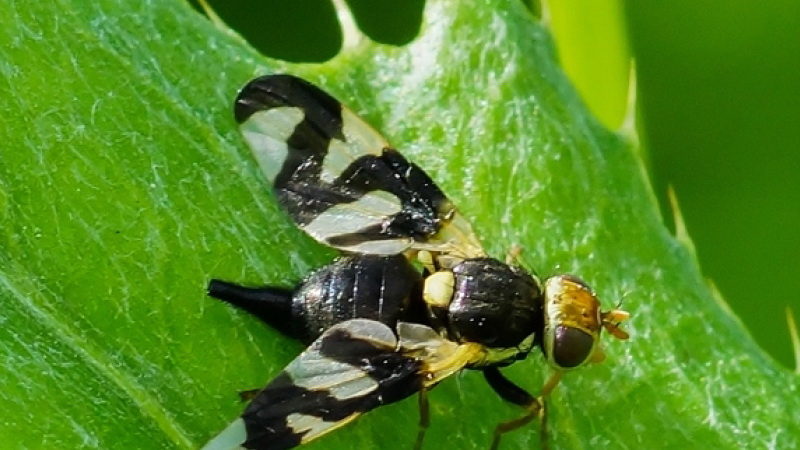
How to process a bush
To prevent diseases, even when pruning a plant, a garden pitch is applied to the cut sites, which serves as a barrier to the entry of pests and the spread of diseases.
In case of plant disease, treatment should be started as soon as possible.
For the prevention and treatment of powdery mildew, treatment is carried out with drugs such as "Topaz", "Forecast", "Fundazol".
In case of white spot, the infected parts of the plant are cut and burned, the bush is treated with Bordeaux liquid or another fungicidal preparation, for example, "Mancozeb" or copper oxychloride.
For the prevention of cercosporosis, the bush is sprayed in early spring with a copper-soap solution, Bordeaux mixture, cuprozan, or the fungicidal preparation Fundazol. In any case, the affected leaves are removed and burned.
When attacked by insects, the bushes are sprayed with insecticides "Aktellik", "Confidor", "Rogor-S" individually or in a mixture according to the instructions.
Attention!To destroy pests and fight diseases, the bushes are sprayed only after the end of the harvest.
During flowering and fruiting, pests are harvested by hand or sprayed with tobacco dust infusion. The product is sold in the store. To prepare a solution, 250 g of the mixture is added to 5 liters of water. The solution is mixed well and three ducks insist. Strain before use.
What birds eat honeysuckle in the suburbs
Eating the first berries is not averse to not only harmful insects, but also birds. Some summer residents complain about the attacks of fieldbirds and sparrows. You can protect the ripening crop from feathered thieves using a net and deterrents.
Honeysuckle harvest
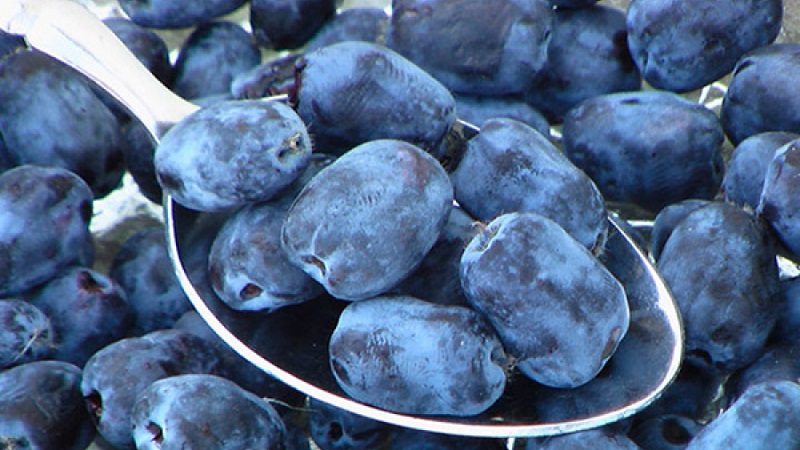
Many gardeners who have planted young honeysuckle on their site expect the harvest next year. And they are disappointed when this does not happen. But this is completely normal - the shrub begins to bear fruit 2-3 years after planting in open ground.
When honeysuckle ripens in the Moscow region
The ripening times of honeysuckle in the Moscow region differ depending on the variety, but on average, harvesting can begin 1-2 weeks earlier than strawberries. In early ripening varieties, this usually occurs in the first half of June, in mid-ripening varieties - in early July. It is easy to determine the degree of fruit ripeness - the berries begin to darken first on the upper branches, and then on the lower and middle bushes. The ripening process can take 4-5 weeks, and the fruits will inevitably begin to crumble.
How to harvest honeysuckle
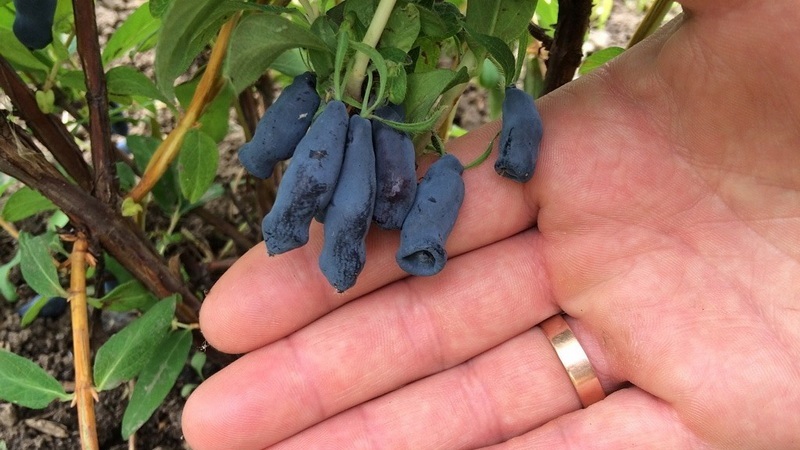
To slow down the shedding process, the plant is watered more often and more abundantly during the ripening period and before harvesting. EIf this is not done, even unripe fruits will begin to crumble.
They are harvested as the berries ripen, do not hope that they will reach optimum ripeness at the same time. Ripe fruits will simply fall from the bush.
If there is no opportunity to regularly pick ripe berries, a film is spread under the bush, and the fallen fruits remain on it, without touching the ground and without being damaged.
Given that the skin of the berries is thin and tender, they do not tolerate transportation well. Therefore, some summer residents begin to harvest about a week before ripening. During storage, the berries ripen and acquire a characteristic taste and aroma.
Conclusion
Honeysuckle is one of the most unpretentious plants for cultivation in the Moscow region. Many varieties have been developed that have high taste and yield unprecedented before. Fruiting occurs from the very beginning of summer and, depending on the variety, almost until autumn.
Resistance to diseases and pests allows you to practically not use pesticides and from the first days of summer to collect tasty, healthy and environmentally friendly berries.